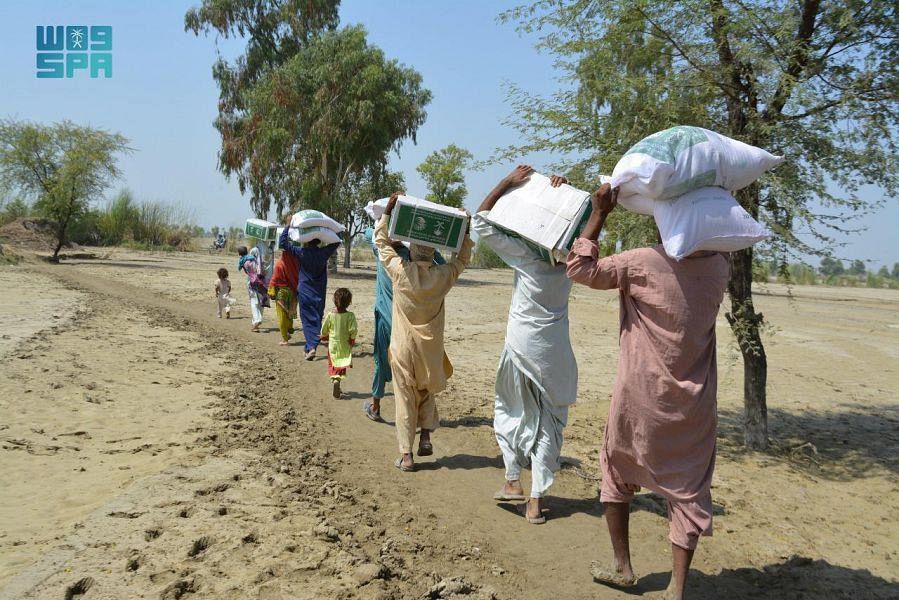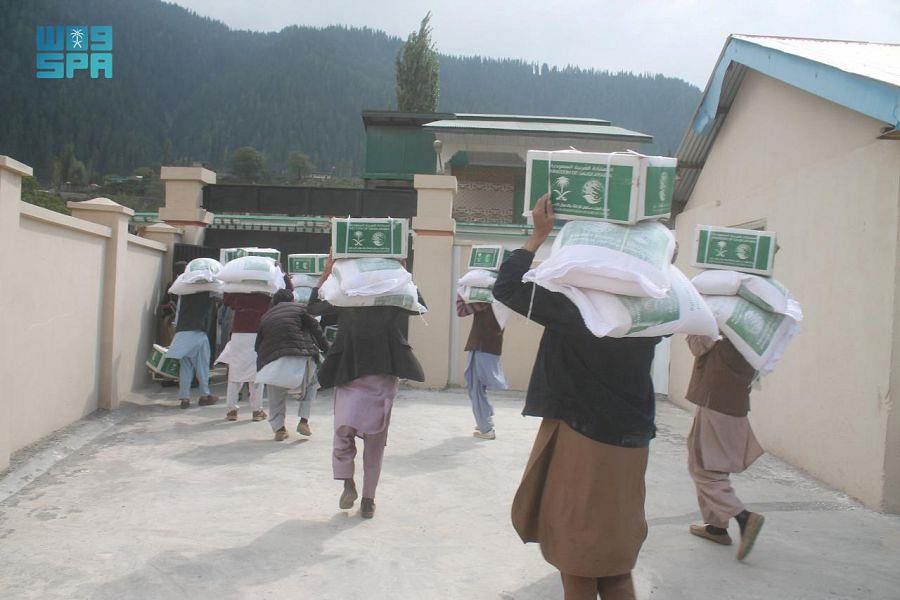
There are growing fears for people living in communities in Pakistan cut off by devastating flooding caused by unusually strong monsoon rains, as damage to major roads hampers the military-led relief effort.
On a visit to a badly flooded area in the north-western province of Khyber Pakhtunkhwa on Monday, the prime minister, Shehbaz Sharif, described the rains as “unprecedented in the last 30 years”. “I have never seen such devastation in my life,” he said, vowing that his government “won’t disappoint” flood victims.
The chief minister of the southern province of Balochistan said more help was needed from the federal government immediately. “We are facing a lack of financial resources, tents and other relief goods and connectivity as all major highways are badly damaged … hampering our relief efforts,” Mir Abdul Qudoos Bizenjo said, adding that his province had sustained more than 200bn rupees ($900m) of damage.
Nationwide, the initial economic losses could be at least $10bn, said the planning minister, Ahsan Iqbal. “I think it is going to be huge. So far, [a] very early, preliminary estimate is that it is big, it is higher than $10bn,” he told Reuters.
Flash floods fuelled by climate change have affected more than 33 million people, officials have said. “It’s all one big ocean, there’s no dry land to pump the water out,” the climate change minister, Sherry Rehman, said on Monday, as the official death rose from 1,033 to 1,136. That figure is expected to increase markedly once emergency teams access the many communities that have been cut off. She added that a third of the nation was now under water, creating a “crisis of unimaginable proportions”.
The National Disaster Management Authority (NDMA) said almost 1m homes had been damaged since the heavy rains began in mid-June, as well as 3,451km (2,144 miles) of roads and 149 bridges. About 719,000 livestock animals have been lost.
Sharif has requested help from the international community, and on Monday the first shipments were arriving on flights from Turkey and UAE.
More than 75% of Balochistan, Pakistan’s largest and most impoverished province, has been damaged by floods, and much of neighbouring Sindh province is under water. Water levels at Manchar lake had risen to just over 120ft, the Sindh chief minister told local media, approaching what he described as the “danger” level.
In the south-eastern city of Shikarpur in Sindh, not far from the Indus River, Rehan Ali, a 24-year-old labourer, said he could not rebuild his collapsed house without government help and could not work now because of the turmoil. “I don’t even have anything to feed my family,” he told Associated Press. “I lost everything. I don’t know where to go. God help me.”
Zuhaib Ahmed Pirzada, a climate activist from Sindh province, shared a video on social media showing water flowing towards the town of Khairpur Nathan Shah. “Rangers [a paramilitary force] have asked the population to leave, and people who had cars have already done so,” he said. “[But] transport costs have increased and the poor can’t afford that.”
Mukesh Meghwar, another activist, said there had been a breach near Jhuddo, in his home district of Badin, on Sunday and more than 3,000 families had fled their homes. More than half of the town was under water, he said. “Sindh and federal governments and the international community should come ahead and help. This is a huge disaster.”
Umar Rashid, a programmes manager for the British charity Muslim Hands who returned on Sunday from DG Khan district in south-western Punjab, described his shock at the scale of the flood damage. “The river has overflown, and it’s gone into a lot of the communities and villages which reside right next to the river,” Rashid said. “It’s absolutely destroyed everything there.”
He said people in one village he visited to distribute aid described water up to their necks. “The water within that area is slowly starting to recede,” he said. “But there’s nothing in terms of infrastructure there. Because of the temperature being over 40 degrees, because of the humidity, it’s now a perfect breeding ground for mosquitoes and waterborne diseases. We expect more flooding to happen. We sadly are expecting more people to lose their lives. That’s just the immediate risks and dangers.”
On Sunday Rehman said the warming climate was causing glaciers in mountainous northern regions to melt faster than normal, exacerbating the impact of the heavy rain.
Pakistan has more glaciers – 7,532 – than anywhere else outside the polar regions. It makes Pakistan one of the countries most exposed to climate change-related weather extremes, said Simon Bradshaw, of the Climate Council of Australia.
He said extreme weather, which has also affected China, Europe and the US in the northern hemisphere summer, was becoming harder to predict as the warming atmosphere produced more volatile events.
It was important for developed countries to do more to reduce their dependency on fossil fuels, Bradshaw said. “Typically, countries that contribute the least to the problem of warming such as Pakistan are the ones that pay the biggest price in terms of weather disasters.”
The flooding comes at a time when Pakistan faces one of its worst economic crises, narrowly avoiding a default. On Monday evening the International Monetary Fund’s executive board approved the release of a much-awaited $1.7bn tranche of bailout money for Pakistan.








